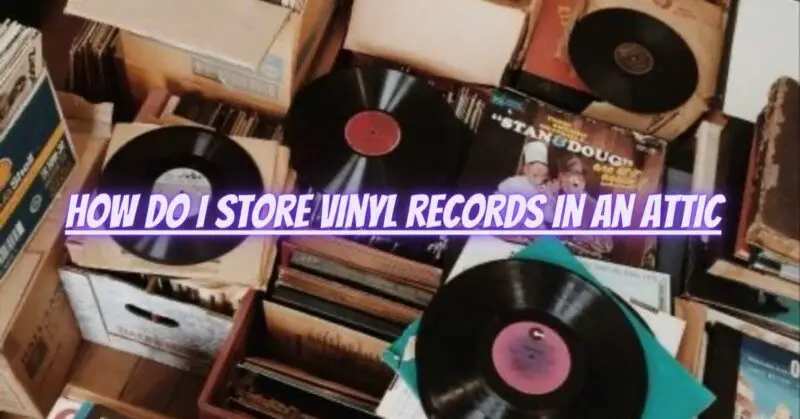Storing vinyl records in an attic can present unique challenges due to fluctuating temperatures, humidity levels, and potential exposure to dust and other contaminants. Vinyl records are delicate and require proper care to preserve their quality and longevity. In this article, we will explore essential guidelines for storing vinyl records in an attic, ensuring their protection and maintaining optimal playback quality.
- Temperature and Humidity Control: Attics are prone to extreme temperature fluctuations, which can cause damage to vinyl records. Ideally, the temperature should be kept within a range of 65-70 degrees Fahrenheit (18-21 degrees Celsius) to prevent warping, melting, or other forms of physical damage. Additionally, humidity levels should be controlled to avoid mold, mildew, and moisture-related issues. Aim for a relative humidity level of 40-50% to maintain the integrity of the records.
- Insulation and Climate Control: Consider insulating the attic to regulate temperature and minimize exposure to external elements. Proper insulation can help maintain a more stable environment for storing vinyl records. Additionally, installing climate control systems, such as air conditioning or dehumidifiers, can further assist in controlling temperature and humidity levels.
- Vertical Storage: Store vinyl records vertically to minimize the risk of warping. Place them in sturdy record storage boxes or specialized record storage units designed to support the weight and prevent leaning or overcrowding. Avoid stacking records horizontally, as this can cause unnecessary pressure on the bottom records, leading to damage over time.
- Protective Sleeves: Protect each vinyl record with high-quality inner and outer sleeves. Inner sleeves made of anti-static polyethylene or polypropylene prevent scratches, dust, and static buildup. Outer sleeves made of polyethylene or polypropylene provide an additional layer of protection against dust, moisture, and UV light. These sleeves help maintain the condition of the record and its sleeve artwork.
- UV Protection: Vinyl records are susceptible to damage from exposure to direct sunlight or UV radiation. Ensure the attic storage area is shielded from sunlight or install UV-blocking window films or curtains to protect the records from harmful rays.
- Organization and Accessibility: Organize your vinyl record collection in a logical and easily accessible manner. Categorize records by genre, artist, or alphabetically to facilitate easy browsing and retrieval without unnecessary handling or movement of other records.
- Regular Inspections and Cleaning: Regularly inspect the records for signs of mold, mildew, or pest infestation. Check for any visible damage, warping, or surface contaminants. Clean records periodically using a gentle record cleaning solution and a microfiber cloth or record brush to remove dust and debris. Avoid using harsh chemicals or excessive pressure during cleaning, as this can damage the vinyl surface.
- Avoid Heavy Objects: Avoid placing heavy objects on top of stored records, as this can cause warping or bending. Be mindful of any potential pressure or weight on the records to ensure their long-term preservation.
Conclusion: Proper storage of vinyl records in an attic requires careful attention to temperature, humidity, and protection from external elements. With the right precautions in place, such as insulation, climate control, vertical storage, protective sleeves, UV protection, organization, regular inspections, and cleaning, you can help safeguard your vinyl record collection and maintain its integrity for years to come. By following these guidelines, you can ensure that your attic becomes a safe and suitable environment for storing your cherished vinyl records.

